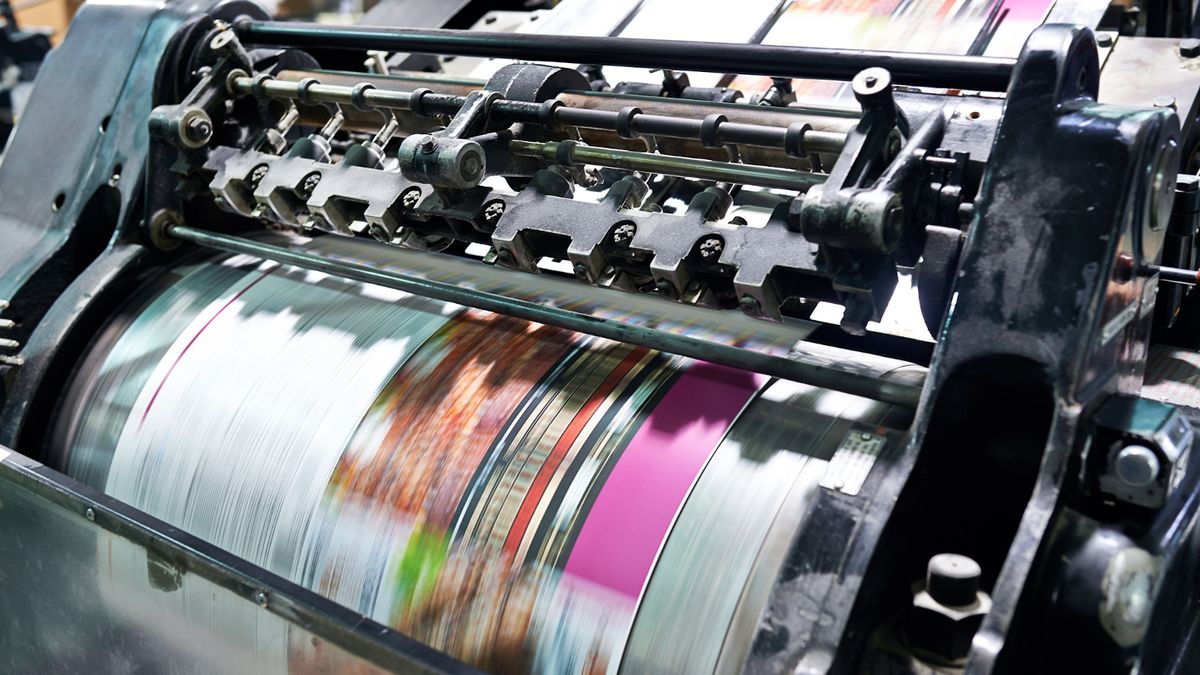In the realm of commercial printing, offset printing stands as a prominent technique, renowned for its exceptional print quality and efficiency. A critical aspect of this process involves the careful selection of materials, which significantly impacts the final outcome. This article delves into offset printing material selection, offering insights into the factors influencing this crucial decision, and guiding business professionals in making informed choices.

Understanding the Basics of Offset Printing
Offset printing is a widely used printing technique in which the inked image is transferred from a plate to a rubber blanket, and then to the printing surface. This method is preferred for producing high-quality prints with consistency. Understanding the mechanics of offset printing is essential before exploring material selection.
The Importance of Material Selection
The materials chosen for offset printing play a pivotal role in determining the quality, cost, and durability of the printed product. Factors such as paper type, ink, and coatings can influence the visual appeal and functionality of the final product.
Types of Paper for Offset Printing
When selecting paper for offset printing, there are several options available, each with unique characteristics:
- Coated Paper: Provides a smooth surface for sharp images and vibrant colors, ideal for brochures and magazines.
- Uncoated Paper: Offers a natural texture and is suitable for stationery and book printing.
- Recycled Paper: An eco-friendly choice that aligns with sustainable practices, without compromising on quality.
The Role of Ink in Offset Printing
Inks used in offset printing are formulated to adhere to the printing surface effectively. Key considerations include:
- Oil-Based Inks: Traditional choice offering vibrant colors and high durability.
- Soy-Based Inks: Environmentally friendly alternative with similar performance to oil-based inks.
Coatings and Finishes
Applying coatings can enhance the appearance and longevity of printed materials. Options include:
- UV Coating: Provides a glossy finish and protects against scratches.
- Aqueous Coating: Water-based coating that offers a subtle sheen, often used for magazines and catalogs.
Factors Influencing Material Selection
Several factors influence the choice of materials for offset printing, including:
Budget Considerations
Balancing quality and cost is crucial. While premium materials may offer superior results, they also come at a higher price. Business professionals must assess their budget constraints and prioritize accordingly.
Environmental Concerns
With growing emphasis on sustainability, selecting eco-friendly materials can enhance a company’s reputation and contribute to environmental conservation. Options like recycled paper and soy-based inks align with green initiatives.
End-Use Application
The intended use of the printed material dictates the choice of materials. For instance, high-quality brochures may require coated paper for a polished look, while business cards might benefit from a sturdy, uncoated stock.
Case Studies: Successful Material Selection
Examining case studies can provide valuable insights into effective offset printing material selection. For example, a company producing high-end magazines may opt for coated paper and UV coatings to achieve a premium finish, enhancing the reader’s experience.
Expert Tips for Optimal Material Selection
Consulting with printing professionals can aid in making informed decisions. Experts can provide guidance on the best materials based on specific project requirements, ensuring optimal results.
Challenges in Material Selection
Despite the benefits, selecting materials for offset printing can present challenges. These include balancing cost with quality, navigating environmental regulations, and meeting customer expectations.
Overcoming Common Challenges
Addressing these challenges involves thorough research and collaboration with knowledgeable suppliers. By understanding the nuances of offset printing materials, businesses can make strategic choices that align with their goals.
Future Trends in Offset Printing Materials
The printing industry is evolving, with innovations in materials and technology. Trends such as biodegradable inks and advanced coatings are shaping the future of offset printing, offering new possibilities for sustainable and high-quality prints.
Conclusion
In conclusion, offset printing material selection is a vital component of the printing process, influencing the quality, cost, and sustainability of the final product. By understanding the various options and factors involved, business professionals can make informed decisions that enhance their projects. For further insights, explore this comprehensive guide on offset printing.

FAQ Section
What is the best paper type for offset printing?
The best paper type depends on the specific application. Coated paper is ideal for vibrant colors, while uncoated paper suits a more natural look.
Are soy-based inks a viable alternative to traditional inks?
Yes, soy-based inks offer an environmentally friendly option without compromising on quality, making them a popular choice for sustainable printing.
How can I ensure my printed materials are eco-friendly?
Opt for recycled paper, soy-based inks, and consult with your printer about eco-friendly coatings and processes to ensure environmentally conscious printing.
This article contains affiliate links. We may earn a commission at no extra cost to you.







